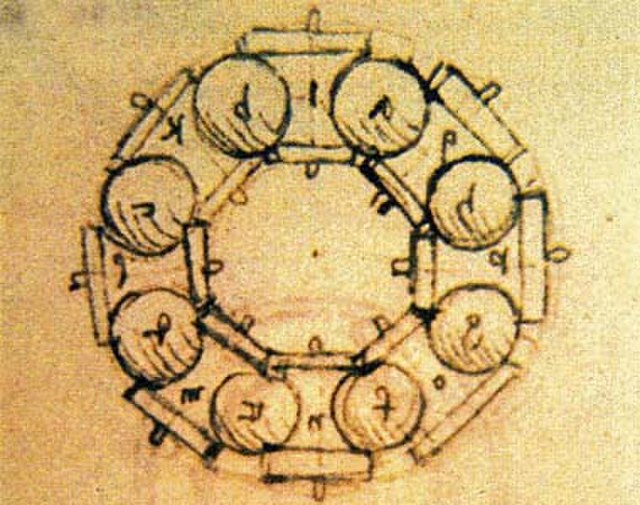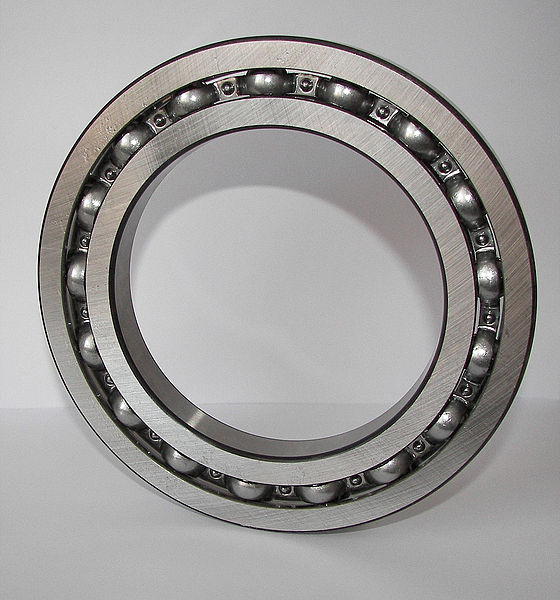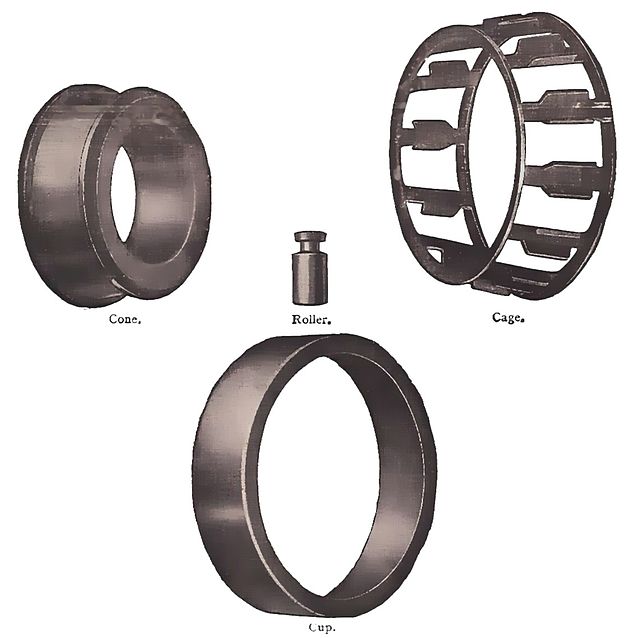In mechanical engineering, a rolling-element bearing, also known as a rolling bearing, is a bearing which carries a load by placing rolling elements between two concentric, grooved rings called races. The relative motion of the races causes the rolling elements to roll with very little rolling resistance and with little sliding.
Study of ball bearing by Leonardo da Vinci (1452–1519)
A gear bearing
A needle roller bearing
A prematurely failed rear bearing cone from a mountain bicycle, caused by a combination of pitting due to wet conditions, improper lubrication, improper pre-load adjustment, and fatigue from frequent shock loading.
A bearing is a machine element that constrains relative motion to only the desired motion and reduces friction between moving parts. The design of the bearing may, for example, provide for free linear movement of the moving part or for free rotation around a fixed axis; or, it may prevent a motion by controlling the vectors of normal forces that bear on the moving parts. Most bearings facilitate the desired motion by minimizing friction. Bearings are classified broadly according to the type of operation, the motions allowed, or the directions of the loads (forces) applied to the parts.
A ball bearing
Drawing of Leonardo da Vinci (1452–1519) Study of a ball bearing
Early Timken tapered roller bearing with notched rollers






